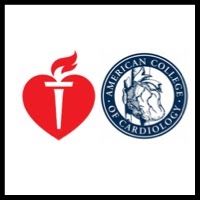AHA, ACC Release New Hypertension Guidelines
The new guidelines define Stage 1 hypertension as a patient having systolic blood pressure between 130-139 or diastolic blood pressure between 80-89.

While advancements in medicine are sometimes called “defining moments,” the release of the new American Heart Association (AHA) and American College of Cardiology’s (ACC) guidelines on hypertension - colloquially known as high blood pressure - have officially redefined the condition.
Announced at the 2017 AHA Scientific Sessions in Anaheim, California, the new guidelines define Stage 1 hypertension as a patient having systolic blood pressure (BP) between 130-139 or diastolic blood pressure between 80-89, shifting from the previous threshold of 140/90 mm Hg.
The guidelines eliminated the category of prehypertension altogether, shifting the thresholds for each stage lower than each’s previous point. Normal BP is defined as 120/80 mm Hg; Elevated as systolic 120-129 or diastolic <80 mm Hg; Stage 2 as systolic 130-139 or diastolic 80-89; Hypertensive Crisis as systolic over 180 and/or diastolic over 120, requiring “prompt changes in medication” or “immediate hospitalization if there are signs of organ damage.”
"The guidelines reflect a major and important shift in our management of hypertension," Christian T Ruff, MD, MPH, of the TIMI Study Group, a professor of medicine at Harvard Medical School, and a cardiologist at Brigham and Women's Hospital, told MD Magazine. "The new categories will certainly translate into many more people being labeled as having elevated blood pressure or hypertension — approximately half of the US population. It is important to note that not all of these individuals will be prescribed antihypertensive medications."
Ruff noted that another feature of the updated guidelines is the change to the "decision to treat" recommendation. It is now based not only on the thresholds for high blood pressure, but the risk of cardiovascular disease, "since we know the major complications of long-standing hypertension include heart attacks and strokes," he said.
Additional changes included changes to prescribing methods. Medication is only recommended be prescribed for Stage 1 hypertension “if a patient has already had a cardiovascular event such as a heart attack or stroke, or is at high risk of a heart attack or stroke based on age, the presence of diabetes mellitus, chronic kidney disease or calculation of atherosclerotic risk,” according to the guidelines.
"So, while everybody in Stage 2 should be treated with medications, only patients with Stage 1 who have known cardiovascular disease or are at high risk for developing cardiovascular disease in the next 10 years require drug therapy," Ruff said. "Those at lower risk are candidates for lifestyle modification alone."
The requirements also include a need for recognition that patients may require 2 or more kinds of medications to control BP, and that many patients are more likely to adhere to multiple treatments if those medications are combined “into a single pill.”
Identification of socioeconomic status and psychological stress as potential risk factors for high BP was also added, with the guidelines noting that consideration of the patient’s situation should be taken into account when planning care.

Paul Muntner, PhD
In a corresponding analysis of the guidelines, led by Paul Muntner, PhD, investigators claim that the 2017 edition of the AHA/ACC guidelines result in a “substantial increase in the prevalence of hypertension but a small increase in the percentage of U.S. adults recommended antihypertensive medication.”
Muntner and colleagues concluded that under the new definition, the prevalence of high BP has now increased. Now, 45.6% of American adults have hypertension and 36.2% should be recommended treatment for the condition. Overall, 53.4% of American adults that are taking antihypertensive medication will now be recommended more intensive therapy.
Findings from the Systolic Blood Pressure Intervention Trial (SPRINT), a National Institutes of Health (NIH) exploration of methods to treat hypertension in more than 9300 adults older than 50 at risk for heart disease, were used to support the new guidelines. SPRINT found that maintaining systolic BP at lower than previously recommended levels positively impacted cardiovascular and kidney disease risk.
"The biggest impact is that this will increase hypertension awareness, which will hopefully translate into the early initiation of lifestyle modification because we know lowering blood pressure at early stages will have the biggest impact in reducing an individual’s lifetime risk of heart disease and stroke," Ruff said. "These guidelines will also lead to a more modest increase in the prescription of antihypertensive medications with a focus on more aggressive treatment for those patients with hypertension and established, or at risk for, cardiovascular disease."
The guidelines were developed by a panel of 21 experts after reviewing more than 900 studies. The previous set of guidelines, the Seventh Report of the Joint National Committee on Prevention, Detection, Evaluation, and Treatment of High Blood Pressure (JNC7) were published in 2003.
Related Coverage
Evolocumab Reduces Risk of Cardiac Events for Peripheral Artery Disease
New Transfusion Threshold Affirmed for Cardiac Surgery
FDA Approves New 10 mg Dosing for XARELTO